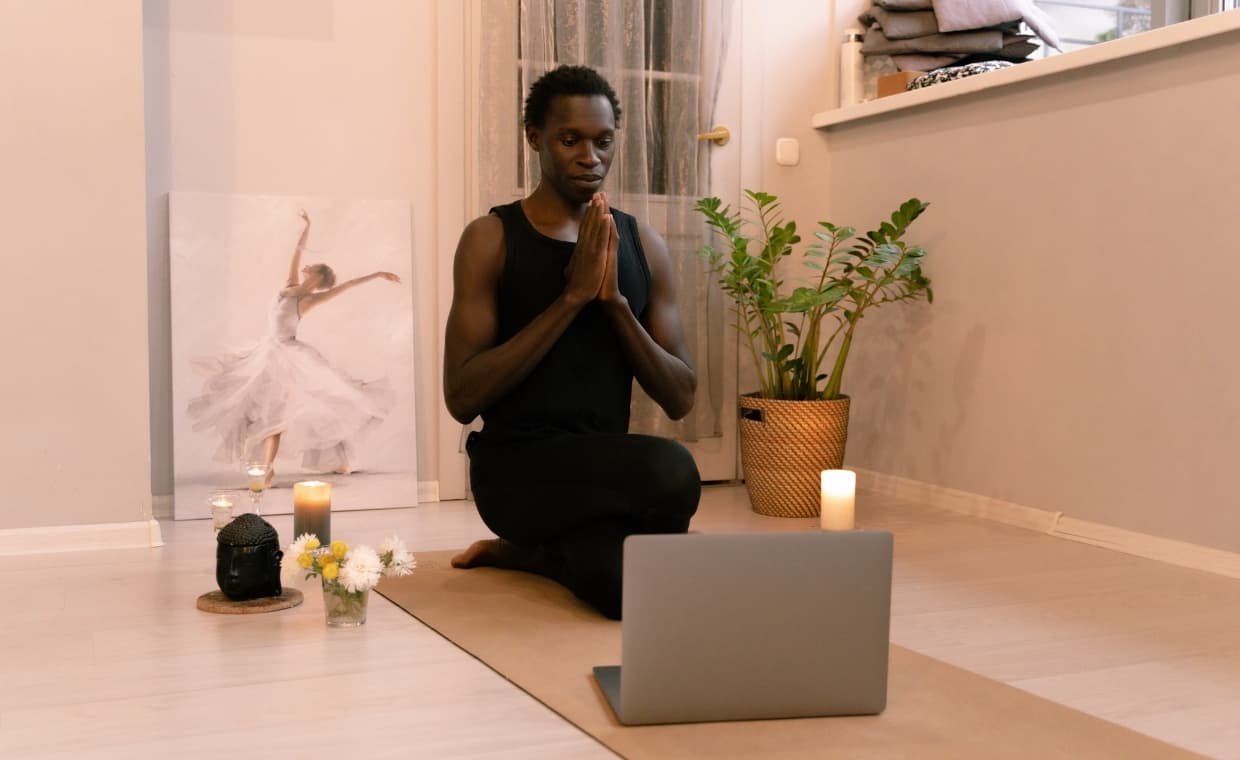
Table of Contents
Quick Overview
Here is the quick overview of creating a sacred space in your home:
- A sacred space is a personal area in your home where you can pause, reconnect, and restore your energy.
- Step 1: Choose a space with intention, no matter how it is small.
- Step 2: Clear unnecessary clutter from space and remove anything that is heavy or stagnant.
- Step 3: Add balance with natural elements like earth, water, air, fire.
- Step 4: Cleanse the energy through rituals like sage, salt, sound, or movement.
- Step 5: Fill the space only with items you love and that bring comfort.
- Step 6: Use the space regularly for reflection, rest, or ritual.
- Step 7: Refresh and update the space as your requirements and energy change.
- The purpose of creating a sacred space is not decoration but creating a supportive, calming, and personal refuge.
You live in a world that is constantly loud. You tell yourself that you can handle it: everyone else seems to manage. But then you notice the way you come home and feel heavier instead of lighter. You start wondering whether what you need is not another scented candle, but an actual shift in energy. In this blog, we will discuss step-by-step process on how to create a sacred space in your home.
This is where the idea of a sacred space comes in. It can be a corner of your home that is set apart from everything else. A place where you can exhale and reconnect. Whether or not you believe in energy, you feel it. You know what it’s like to walk into a room where people were just fighting: everything feels tense and brittle, even if nobody says a word. You also know what it’s like to sit in a kitchen where someone is making soup and humming, and suddenly you feel better, calmer, as if you’ve been let in on a secret. Energy is real. Cleansing that energy deciding what stays, what goes, and what you invite in is how you begin to create a home that restores you.
If you’re ready to start creating your own sacred space, you don’t have to do it alone. Sometimes the best ideas come from people who already live in the language of energy. If you want guidance on making such changes in your energy field, you can visit website with spiritual advisors.
Step One: Choose Your Space with Intention

You don’t need an entire room. What you need is one place that you decide, without hesitation, is yours. It could be a corner by the window, a shelf in your living room, or even the top of your dresser. What matters is that you claim it.
Choosing a space is an act of declaration: this is where you stop being available to the demands of everything else. This is where you gather yourself. Once you choose it, you’ll notice the way your energy shifts just by standing there. You’ve drawn an invisible boundary, and boundaries have power.
Step Two: Clear Out What Doesn’t Belong
It’s tempting to start decorating immediately, but before you add, you must subtract. Energy clings to things, especially things you no longer want or use. That pile of mail from last year? Heavy. The broken lamp you keep telling yourself you’ll fix? Heavy. Even the shoes you never wear but can’t throw away because they were expensive? Heavy.
If you want your sacred space to feel light, you have to strip it down. Remove anything that feels stale, broken, or obligatory. Leave only what sparks something in you; peace, joy, comfort, memory. Your gut knows better than your brain what belongs and what doesn’t.
Step Three: Invite the Elements

Every sacred space benefit from a balance of elements. You don’t need to major in metaphysics to understand this, just think of how you feel when you sit outside on a breezy day versus inside with no air, or how different a room feels with natural light compared to fluorescent bulbs.
Bring in earth: a stone, a plant, a bowl of salt.
Bring in water: a small bowl, a glass, a seashell filled from the ocean.
Bring in air: incense, feathers, or simply an open window.
Bring in fire: a candle, a lantern, even fairy lights if flames aren’t an option.
The point is not perfection; it’s harmony. By balancing these small tokens of the world outside, you remind yourself that you are not just a person in a room, you are part of something much larger.
Step Four: Cleanse the Energy

This is the part where you may feel slightly ridiculous, and that’s okay. Lighting sage or palo santo, sprinkling salt, ringing a bell, or even clapping your hands, these rituals work not because they’re trendy, but because they force you to participate. They make you pause. They mark the shift.
Cleansing is about wiping the slate clean, resetting the room so that whatever was there before no longer lingers. Think of it like washing your sheets. Do you absolutely have to? No. But doesn’t everything feel better afterward? Exactly.
Step Five: Fill it with What You Love
Now you get to decorate, but the rule is simple: only what you love. Photos, crystals, books, a blanket, a journal whatever makes you exhale. Your sacred space should be a reflection of your heart, not a Pinterest board.
Don’t worry if it looks “good.” Worry if it feels good. This is not for Instagram. This is for you.
Step Six: Use it
This may sound obvious, but you’d be surprised how often people create sacred spaces and then never sit in them. Like treadmills that become clothing racks, altars can become dust collectors. The real power of a sacred space is not in creating it, but in using it.
Sit there. Meditate there. Read there. Cry there. Drink your coffee there. Let it become the place you return to when you need to remember yourself. And the more you use it, the more powerful it becomes, because energy builds on itself.
Step Seven: Refresh Regularly
A sacred space is not static. It changes as you do. The photo that inspires you today may not inspire you next year. The candle that soothed you in winter might feel heavy in summer. Pay attention to when the space starts to feel stagnant. Change it. Refresh it. Add flowers. Switch out the objects. Cleanse again.
This isn’t about perfection. It’s about staying in dialogue with yourself. Your sacred space is like a mirror, it reflects you, but only if you keep it alive.
Why it Matters
You may wonder if all this is just decorating with extra steps. But creating a sacred space isn’t about décor, it’s about giving yourself permission. Permission to pause, to connect, to notice that life doesn’t just happen in chaos. It happens in stillness too.
The truth is, you don’t have to believe in energy to feel the difference. You’ll feel it when you step into your space after a long day, when you sit down and realize your shoulders drop without you even asking them to. You’ll feel it when the world outside is shouting and inside, for once, it’s quiet.
And maybe, just maybe, you’ll realize that what you were looking for all along wasn’t a bigger apartment, a better couch, or another scented candle, it was a corner of the world that was truly yours.
Also Read: Tips to Create a Calm Meditative Space at Your Home!
FAQs on How to Create a Sacred Space in Your Home
1. Do I Need a Whole Room for a Sacred Space?
No, a sacred space can be as small as a single shelf, a cozy chair, or a windowsill. The most important aspect is the intention behind the space.
2. What Items You Can Include in a Sacred Space?
You can choose items that bring comfort and serenity to your space such as candles, crystals, plants, meaningful symbols, spiritual texts, or anything that feels personally significant.
3. Is it Necessary to Use Sacred Space Every Day?
Not necessary. For a daily use is ideal for building positive energy, use it as often as feels right. Even a few minutes a day can make a significant difference.
4. Why Does Creating a Sacred Space Matter?
It provides a refuge for stillness, self-care, and restoration in a busy world, helping ground and nurture overall well-being.






























